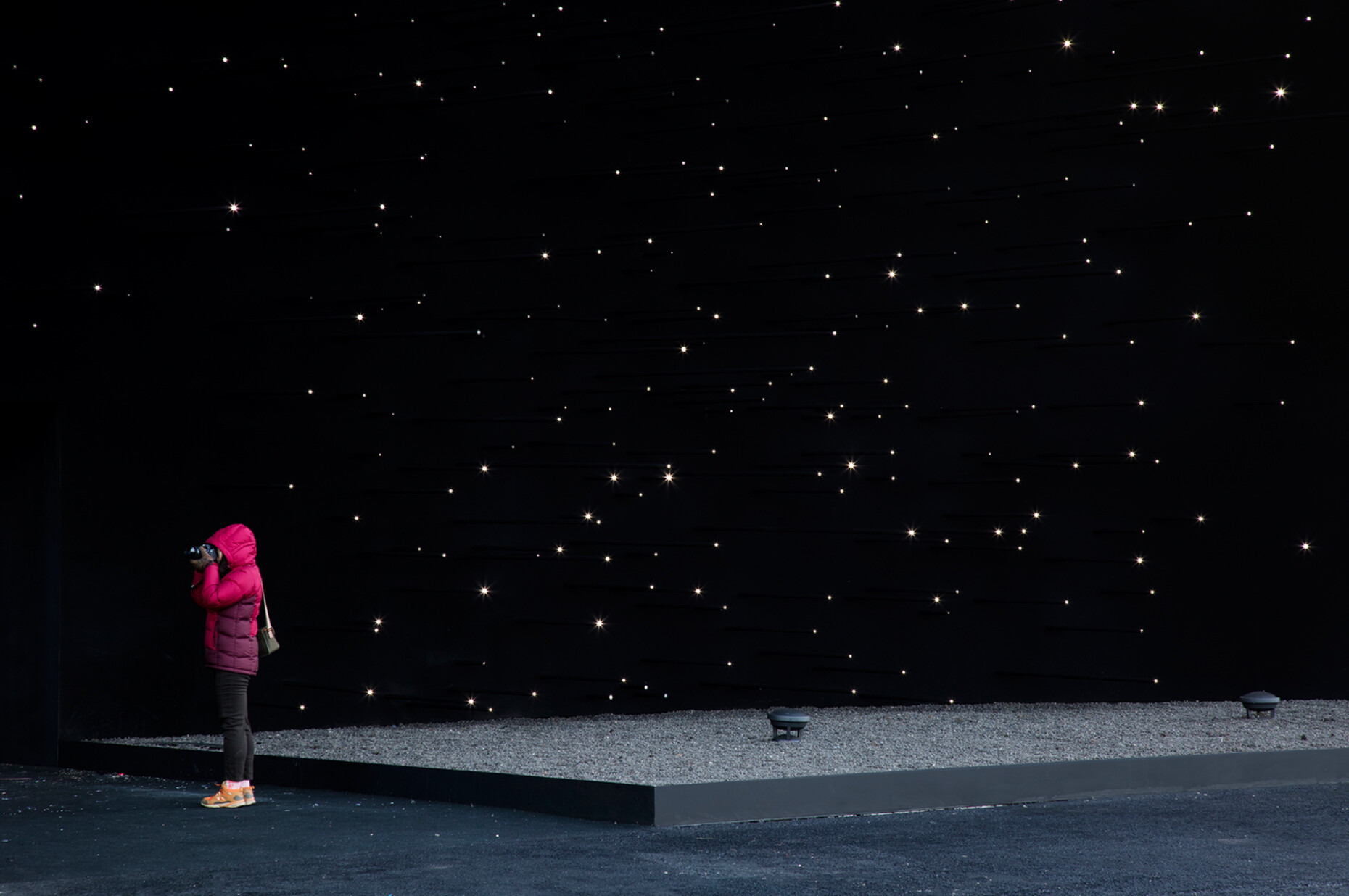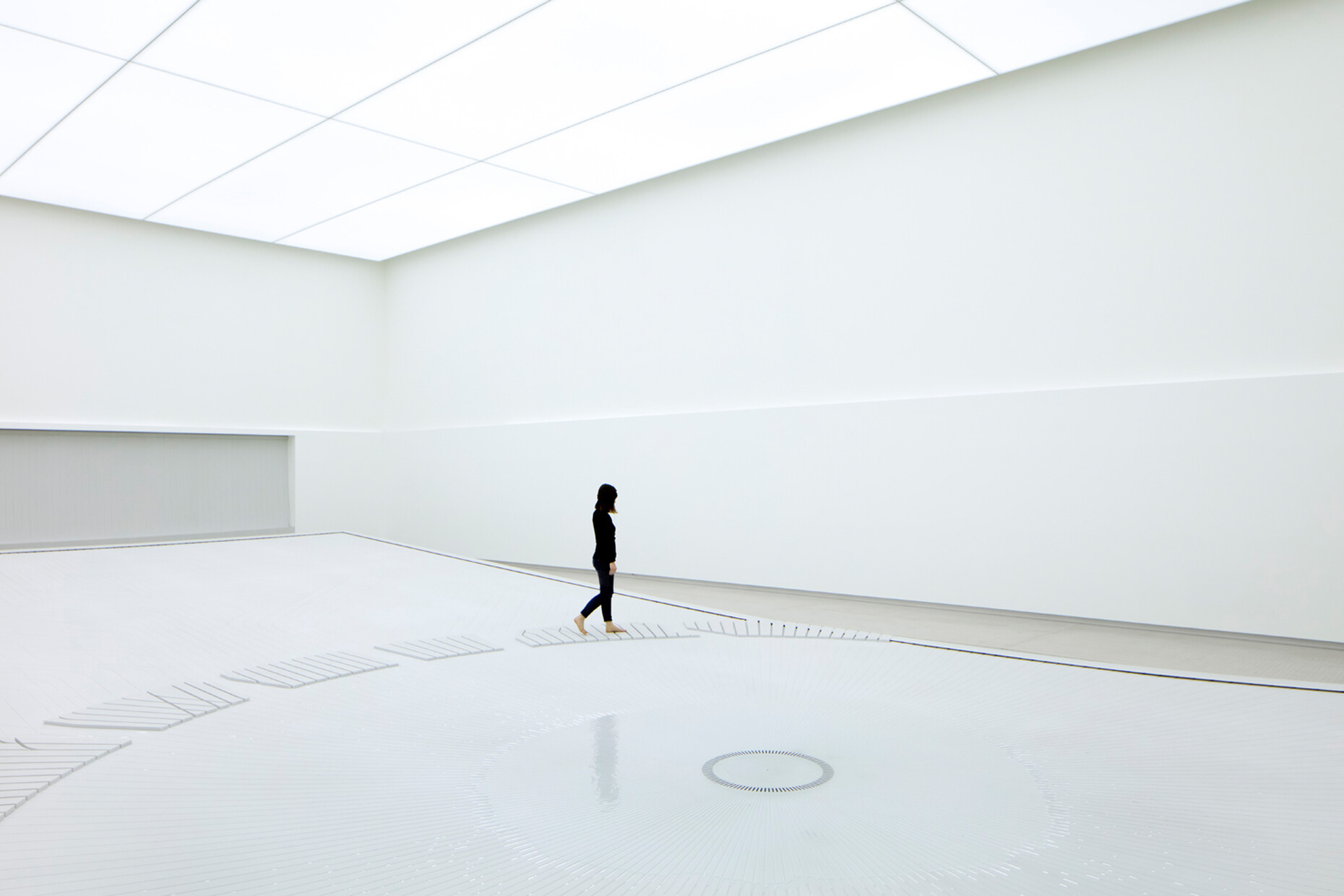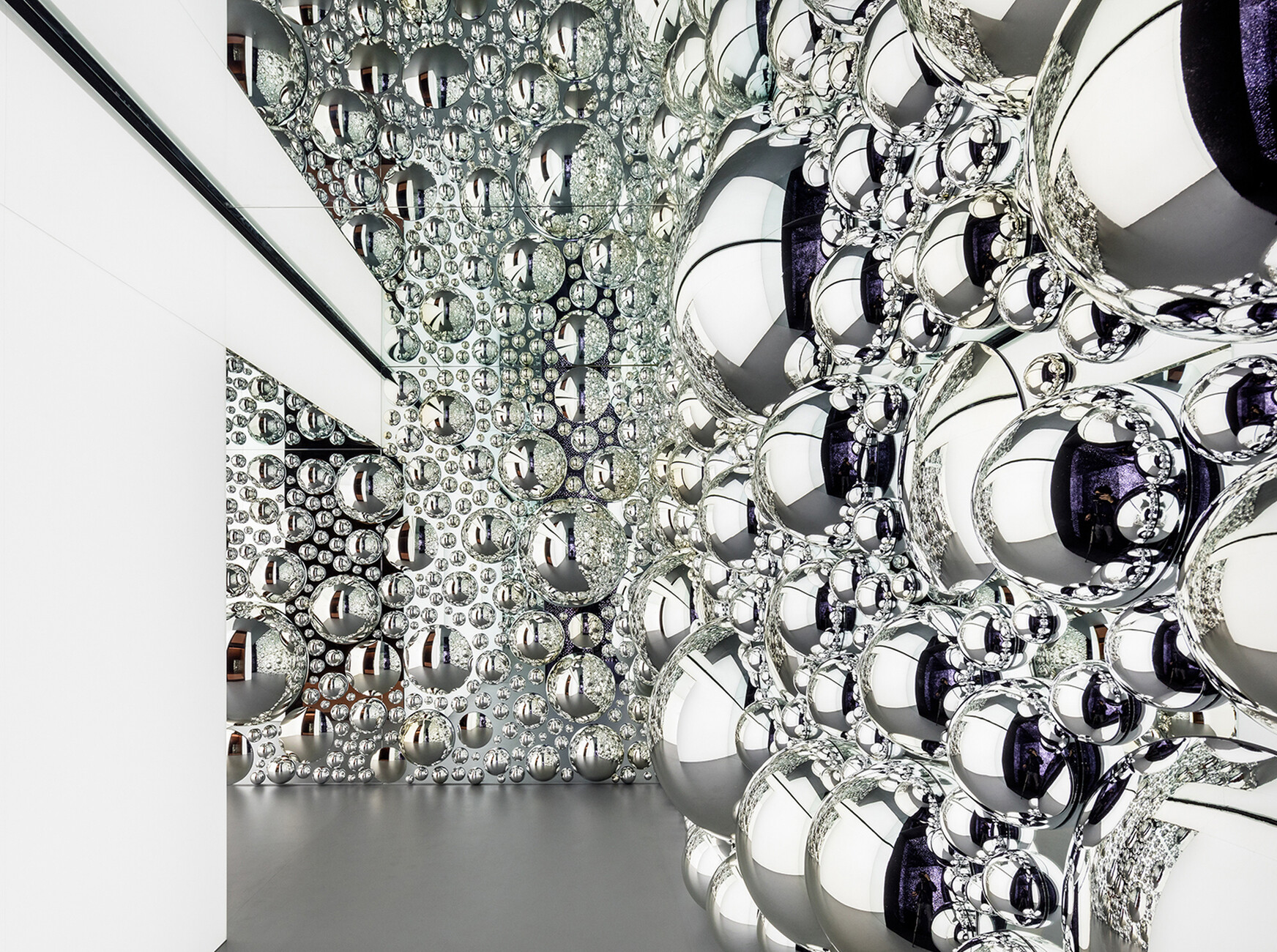As white as snow, as black as ebony
It is as if there was a gateway to space in downtown Pyeongchang in South Korea: For the Winter Olympics, the London-based architect Asif Khan designed a pavilion for the automotive manufacturer Hyundai that it is difficult to take one’s eyes off. The eye retains no contours, in fact nothing at all. Just a deep, intense black. “Spatial division” is how Khan refers to his design. The architect has the coating Vantablack VB x 2, a high-tech material comprising an extremely fine texture of upright carbon rods, to thank for this effect. The surface absorbs 99 percent of the light that hits it, thereby fooling the human eye. The UK company Surrey Nanosystems had space travel and the military in mind when it developed the first version of Vantablack – though the “blackest black” effect also offers architects, designers, and artists creative opportunities, and it even made it into the Guinness World Records as “the world’s blackest substance.”
But that is not all. In addition, what the manufacturer refers to as the “darkest substance man has ever made” also caused an uproar in the art scene. The British artist Anish Kapoor secured the exclusive rights to use the paint for creative work, causing, as was to be expected, a wave of indignation. Thereupon, his fellow artist Stuart Semple created the “pinkest pink” as his version of the “blackest black” and decreed that it could be bought cheaply by anyone, with the exception, that is, of Anish Kapoor. Shortly afterwards Kapoor posted his striking response on Instagram for all to see: his middle finger, which shortly before he had dipped in Semple’s bright pink pigment.
Asif Khan pays little attention to this secondary battlefield. He intensifies the impression of gazing into space by means of illuminated dots fitted to the concave sides of the pavilion. Once you’ve had enough of gazing into the void and, despite its camouflage, found the entrance to the unreal-looking structure, the hard contrast really hits you: glaring bright light in a white cube measuring a good 200 square meters. It’s a clinical laboratory atmosphere par excellence. An interactive installation, parts of which are walk-in, fills the space in front of visitors. Like in a marble run, air pressure guides water droplets through a branched structure before they end up in an everyday drain. From infinity to diminutive, and ultimately to insignificance – the reference to reflection on the weighting of human existence in comparison with the expanses of the universe is tangible. That said, despite visual and thematic depth, Asif Khan’s work is primarily intended to serve one purpose, namely advertising the Korean automotive manufacturer Hyundai’s first fuel cell cars.
Hyundai pavilion in Pyeongchang
Through March 18, 2018













